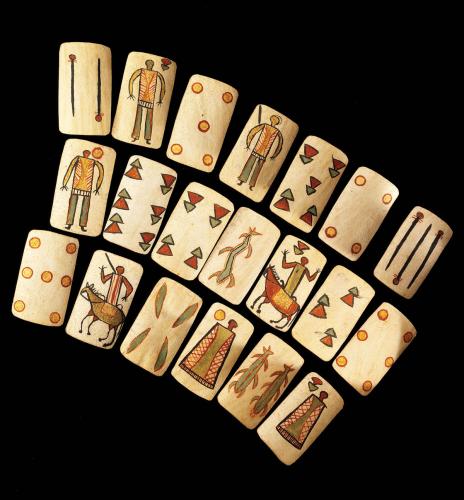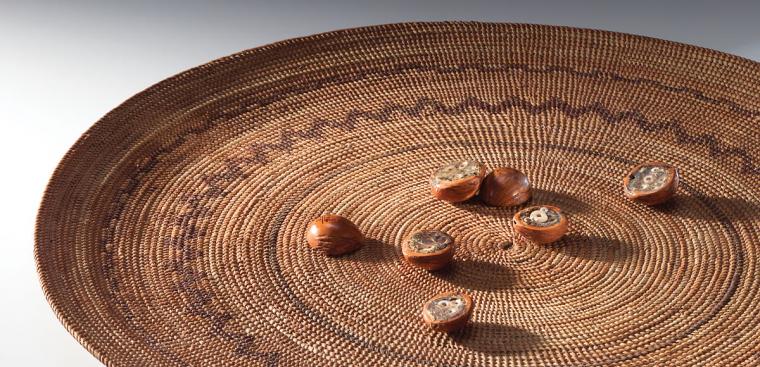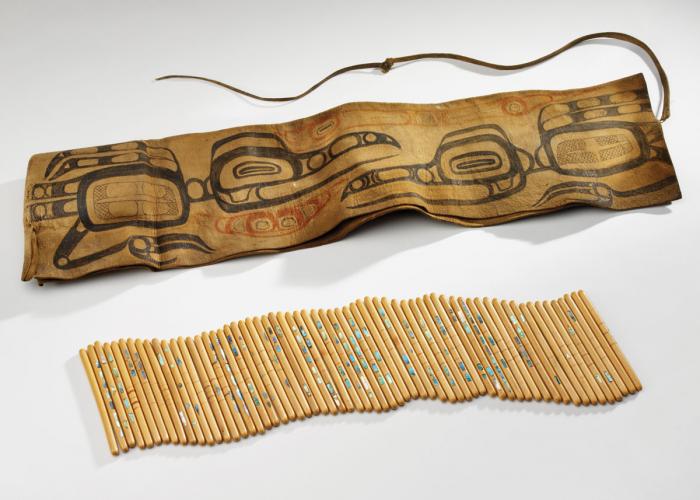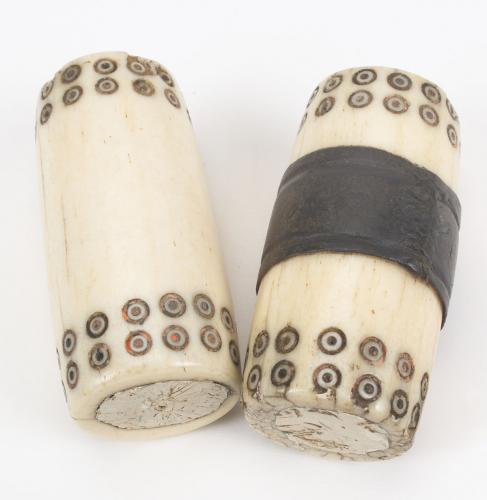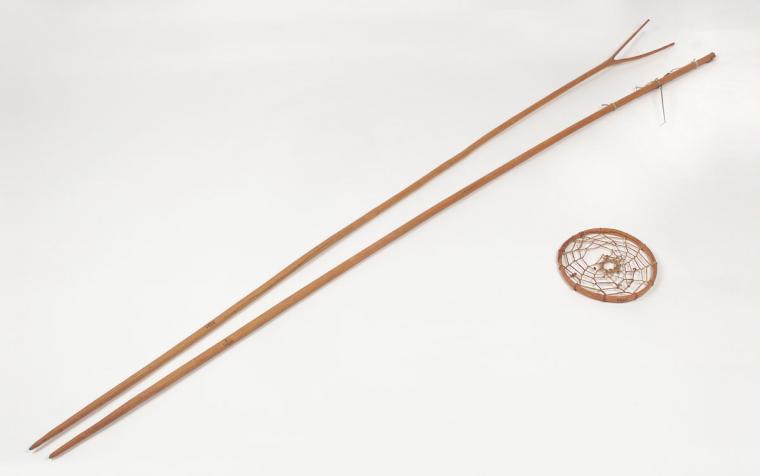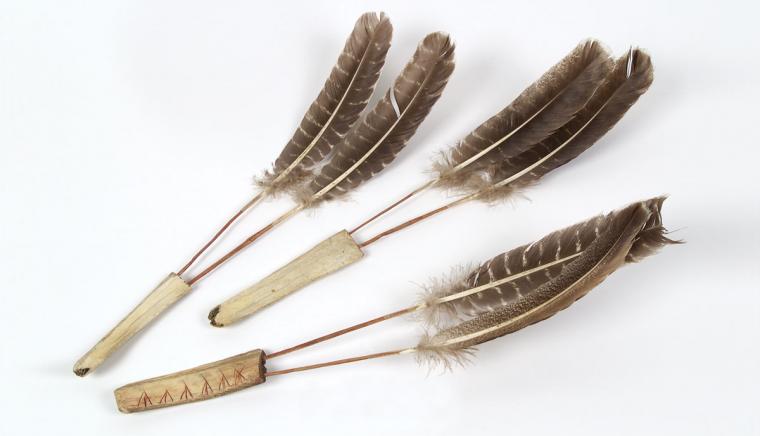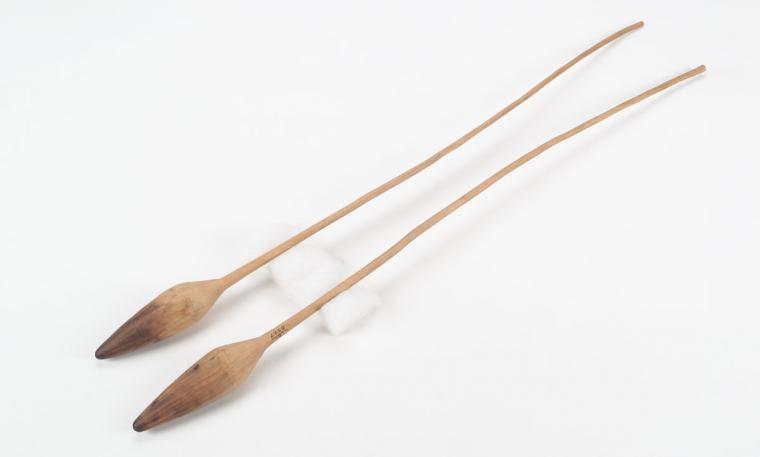Games entice people to gather, particularly during cold winter months. They can evoke fond childhood memories of family members huddling around a kitchen table to play a board or card game while listening to parents or grandparents recount stories. Even as adults, the thrill of beating our opponents, our own best score or “lady luck” is shared across many cultures.
“Playing games is part of what makes us human,” said Ann McMullen, head of Collections Research and Documentation at the National Museum of the American Indian.
For millennia, Indigenous people throughout the Americas have played games that bring family, friends and communities together. Many were games of chance and centered around the throwing of dice made of materials such as bone, pottery, shell or even sticks. The dice would have different designs or colors on each side and, when they were tossed, the color or design that faced up determined the score. String games were played in many regions by Native peoples, from the Inuit in Alaska and Canada to the Navajo in the Southwest. Similar to “cat’s cradle,” these games involved weaving a piece of sinew or string into intricate patterns between two hands. The resulting designs could represent animals or other figures and some were a way to tell stories to children.
While many Indigenous games may have been pastimes, some were intended to train youth in skills they would need to survive or to showcase such skills in adults. Boys and girls in many regions were encouraged to play racing and running games to build stamina. Young hunters were given child-sized bow and arrow sets, spears or other hunting tools so they could practice hitting targets at early ages. “Chunkey,” played mainly by adult men, is thought to have originated about 2,500 years ago at Cahokia, a large Indigenous city near the Mississippi River in west-central Illinois. In this game, one player rolls a stone disc across the ground and the other throws a spear to try to get it as close to where the stone stops as possible.
Competitions, particularly team sports, were a way to not only build athletic prowess but also settle disputes. “People tend to think of games as being childish,” said McMullen. “In Native America and other parts of the world, there are games that were tremendously important because they served as ways for people who were not necessarily friendly to work out their differences without physical violence.”
Lacrosse, originally played only by men, is said to have been a gift from the Creator to the peoples of the eastern United States and Canada. Both this game and stickball, which was commonly played by members of Great Lakes and southeastern tribes such as the Meskwaki, Ojibwa and Ho-Chunk, were sometimes called the “little brother of war.” In stickball, players run down a long field and take turns using a stick with a webbed pocket at the top to lob a leather-covered ball back and forth to teammates. At the end of the field is a pole, and whoever has the ball must touch the pole to score points. Women also played double-ball, or shinney, using sticks with curved ends and leather-covered balls. All three are rigorous games, and the male and female athletes who play them today are highly respected.
Similar to the Olympics in ancient Greece, games could encourage peace. McMullen said, “The spirit of competition and excellence in performance could win the day.”
The National Museum of the American Indian has hundreds of game items in its collection. The following includes a few examples currently in the museum’s “As We Grow: Traditions, Toys, and Games” display that is part of the greater “Windows on Collections” exhibition at the museum in Washington, D.C.

